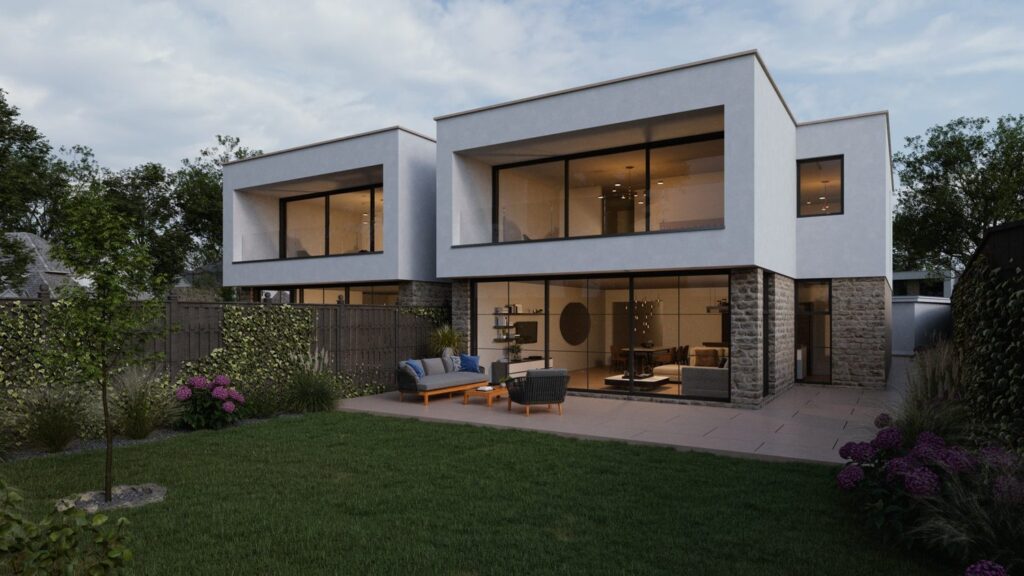
Architectural Design for Climate Change Adaptation and Resilience
In today’s rapidly changing world, architectural design for climate change is an urgent necessity. As global temperatures rise and weather patterns become increasingly unpredictable, architects and designers are tasked with creating structures that not only withstand these changes but also contribute positively to the environment. This article will explore how innovative architectural solutions are being developed to address the challenges posed by climate change, ensuring that our buildings are both resilient and sustainable.

Understanding Climate Change and Its Impact on Architecture
Climate change refers to long-term alterations in temperature, precipitation, and other atmospheric conditions. These changes are largely driven by human activities, such as the burning of fossil fuels and deforestation. For architects, the implications are significant. Rising sea levels threaten coastal cities, while intense heat waves and storms challenge the durability of traditional building materials and designs.
Architects are responding by integrating sustainable design principles into their projects. This includes using materials that are both durable and environmentally friendly, as well as incorporating features like green roofs and rainwater harvesting systems.
Key Strategies in Architectural Design for Climate Change
Several strategies are being employed to ensure that buildings are climate-resilient:
- Passive Design Techniques: Utilizing natural light and ventilation to reduce reliance on artificial heating and cooling systems. This not only lowers energy consumption but also enhances the comfort of occupants.
- Use of Recycled Materials: Incorporating materials that have been repurposed from previous structures reduces waste and lessens the environmental impact of new constructions. For more on this, visit recycled materials in construction.
- Green Roofs and Walls: These features help regulate building temperature, reduce stormwater runoff, and improve air quality.
- Water Conservation Systems: Implementing rainwater harvesting and greywater recycling systems can significantly reduce water usage.
The Role of Technology in Sustainable Architecture
Technology plays a crucial role in advancing architectural design for climate change. Building Information Modeling (BIM) allows architects to create detailed 3D models of their projects, enabling them to analyze the environmental impact of different design choices. Additionally, smart building technologies can optimize energy use by adjusting lighting and HVAC systems based on real-time data.
Moreover, advancements in materials science are leading to the development of new, more sustainable construction materials. For example, researchers are exploring the use of carbon-negative concrete, which absorbs more CO2 than it emits during its production.
Case Studies: Successful Climate-Responsive Buildings
Several buildings around the world are setting new standards in climate-responsive design:
- The Edge, Amsterdam: Known as one of the world’s most sustainable office buildings, The Edge uses smart technology to optimize energy use and provides a comfortable working environment for its occupants.
- One Central Park, Sydney: This residential tower features vertical gardens and a heliostat system that directs sunlight into the building’s lower levels, reducing energy consumption and enhancing aesthetic appeal.
The Importance of Community and Policy in Driving Change
While architects play a pivotal role in designing climate-resilient buildings, community involvement and supportive policies are equally important. Urban planners and policymakers must work together to create environments that support sustainable living practices.
Communities can advocate for green building standards and support local initiatives that promote sustainability. Meanwhile, governments can implement regulations that encourage the use of renewable energy sources and sustainable construction practices. To learn more about sustainable urban living, check out this external link on sustainable cities and communities.
Challenges and Opportunities in Climate-Responsive Design
Despite the many benefits of climate-responsive design, architects face several challenges. Financial constraints can limit the adoption of sustainable technologies, while regulatory hurdles may slow down innovation. However, these challenges also present opportunities for creative solutions and collaboration across sectors.
For instance, the sharing economy is being leveraged to make sustainable housing more accessible. Architectural designs that accommodate co-living and shared spaces can reduce resource consumption and strengthen community ties. Learn more about this concept in sharing economy in housing.

Looking Forward: The Future of Architectural Design
The future of architectural design for climate change is bright, with endless possibilities for innovation and growth. As technology continues to evolve, architects will have access to new tools and materials that can further enhance the sustainability and resilience of our built environment.
Ultimately, the success of these efforts will depend on the collective actions of architects, policymakers, and communities. By working together, we can create a world where buildings not only withstand the impacts of climate change but also contribute to a healthier, more sustainable planet.
FAQs
Q1: What is the role of architects in combating climate change?
A1: Architects design buildings that are energy-efficient and environmentally friendly, helping to reduce carbon emissions and mitigate the effects of climate change.
Q2: How can buildings be made more climate-resilient?
A2: Buildings can be made more climate-resilient by incorporating features like green roofs, passive design techniques, and water conservation systems.
Q3: What are some examples of sustainable building materials?
A3: Sustainable building materials include recycled steel, bamboo, and carbon-negative concrete, all of which have a lower environmental impact than traditional materials.
For more insights on innovative housing designs, visit this article on affordable housing designs.
This article contains affiliate links. We may earn a commission at no extra cost to you.